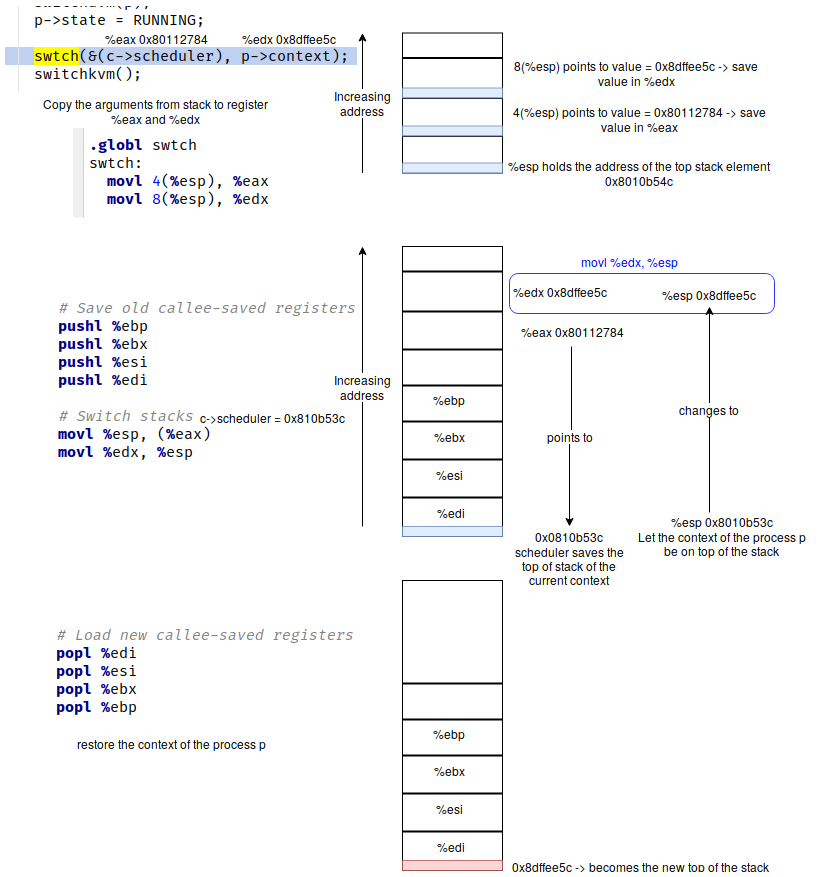Context Switch in Xv6
Last weekend I wanted to refresh my memory about assembly, I took the context switching code in Xv6 as an example. It was quite interesting to walk through the code, here is my debugging process
Assembly illustrated

%esp holds the address of the top stack element and the stack grows downward. In the beginning, the value in %esp is 0x8010b54c. The two arguments (context **old and context *new) of swtch are just next to %esp, for a 32 bits machine, each of them takes 4 bytes. The idea behind this function is quite simple
- First, we copy the current context from register to the kernel stack in memory;
- Then we save the address of the top kernel stack in
*old; - In the end, the value held by
%espis changed tonewand we can restore the context in the same format as we just left. The context switch is done.
Callers
The swtch function is called twice in the code.
One is in the function scheduler, which scans all the process array. When it finds one process p RUNNABLE, it calls swtch to save the current context in scheduler and restore the process p (this is the case shown in the figure).
This is where the magic happens, before you enter into the function swtch, you are inside the method scheduler, you have your call stack all in the function scheduler, everything looks normal. While once you pass through swtch (more specifically after you change the top of the stack %esp and restored the stack next to it to register), suddenly it looks like you were calling swtch from the process p itself. In this way, the control is handed from scheduler to process.
The second place where swtch is called is in sched. sched is called is yield, sleep and exit etc. In general, it is called in places where the process wants to give the control back in OS.
The mode that sched and scheduler work cooperatively with each other can be referred to as coroutine. One works to some point then give control to the other and vice versa. I wonder if the yield keyword in Python is implemented in the same way.
Context Switch in Xv6
Therefore, the context switch in Xv6 is not directly from process A to process B but via an intermediate scheduler. Each cpu has one scheduler attached.